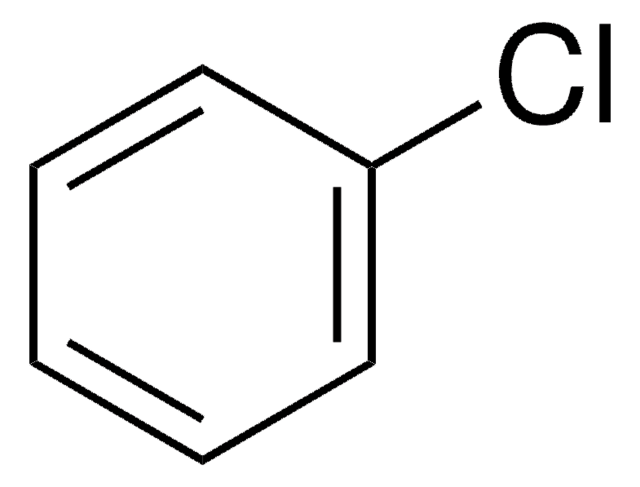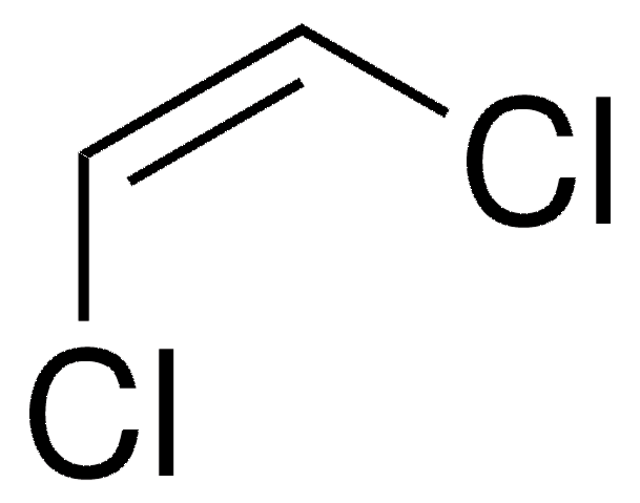372145
Trichlorethylen
anhydrous, contains 40 ppm diisopropylamine as stabilizer, ≥99%
Synonym(e):
TCE, Trichlorethen
About This Item
Empfohlene Produkte
Qualität
anhydrous
Qualitätsniveau
Dampfdichte
4.5 (vs air)
Dampfdruck
61 mmHg ( 20 °C)
Assay
≥99%
Form
liquid
Selbstzündungstemp.
770 °F
Enthält
40 ppm diisopropylamine as stabilizer
Verunreinigungen
<0.002% water
<0.005% water (100 mL pkg)
Abdampfrückstand
<0.0005%
Brechungsindex
n20/D 1.476 (lit.)
bp
86.7 °C (lit.)
mp (Schmelzpunkt)
−84.8 °C (lit.)
Dichte
1.463 g/mL at 25 °C (lit.)
SMILES String
Cl\C=C(\Cl)Cl
InChI
1S/C2HCl3/c3-1-2(4)5/h1H
InChIKey
XSTXAVWGXDQKEL-UHFFFAOYSA-N
Suchen Sie nach ähnlichen Produkten? Aufrufen Leitfaden zum Produktvergleich
Allgemeine Beschreibung
Many methods have been proposed for the mineralization of TCE.
Signalwort
Danger
Gefahreneinstufungen
Aquatic Chronic 3 - Carc. 1B - Eye Irrit. 2 - Muta. 2 - Skin Irrit. 2 - Skin Sens. 1 - STOT SE 3
Zielorgane
Central nervous system
Lagerklassenschlüssel
6.1D - Non-combustible acute toxic Cat.3 / toxic hazardous materials or hazardous materials causing chronic effects
WGK
WGK 3
Flammpunkt (°F)
closed cup - does not flash
Flammpunkt (°C)
closed cup - does not flash
Persönliche Schutzausrüstung
Eyeshields, Gloves, type ABEK (EN14387) respirator filter
Zulassungslistungen
Zulassungslistungen werden hauptsächlich für chemische Produkte erstellt. Für nicht-chemische Produkte können hier nur begrenzte Angaben gemacht werden. Kein Eintrag bedeutet, dass keine der Komponenten gelistet ist. Es liegt in der Verantwortung des Benutzers, die sichere und legale Verwendung des Produkts zu gewährleisten.
EU REACH SVHC Candidate List
EU REACH Annex XVII (Restriction List)
EU REACH Annex XIV (Authorisation List)
Hier finden Sie alle aktuellen Versionen:
Besitzen Sie dieses Produkt bereits?
In der Dokumentenbibliothek finden Sie die Dokumentation zu den Produkten, die Sie kürzlich erworben haben.
Kunden haben sich ebenfalls angesehen
Unser Team von Wissenschaftlern verfügt über Erfahrung in allen Forschungsbereichen einschließlich Life Science, Materialwissenschaften, chemischer Synthese, Chromatographie, Analytik und vielen mehr..
Setzen Sie sich mit dem technischen Dienst in Verbindung.









